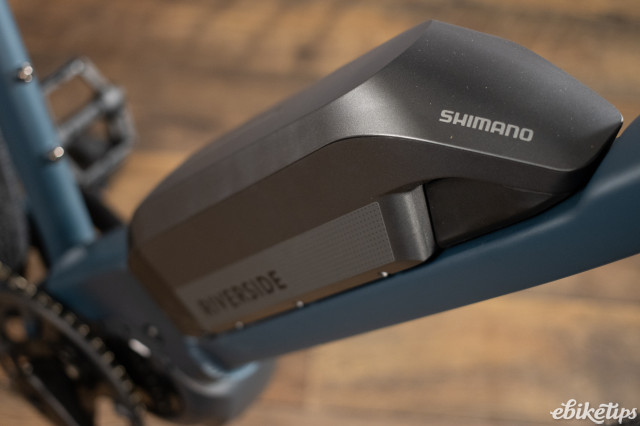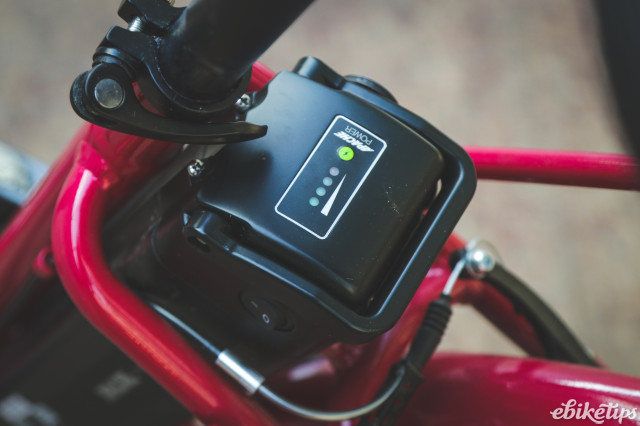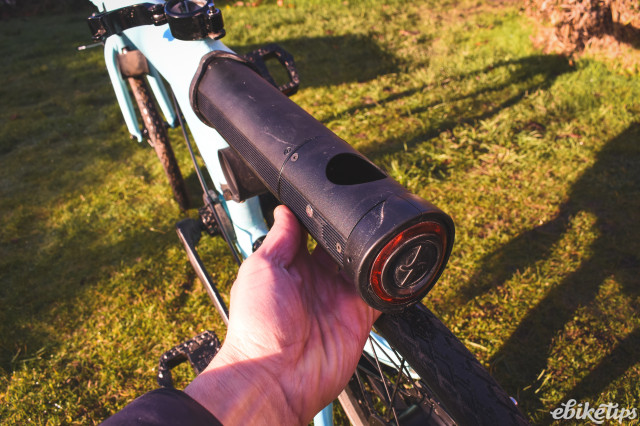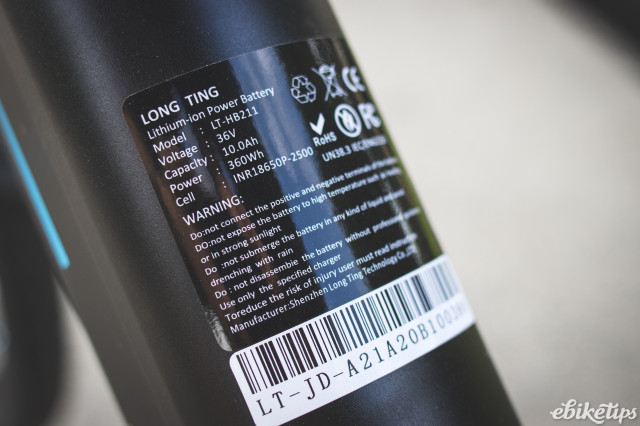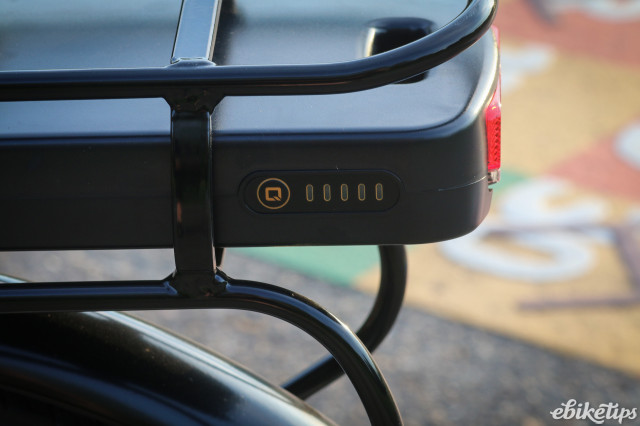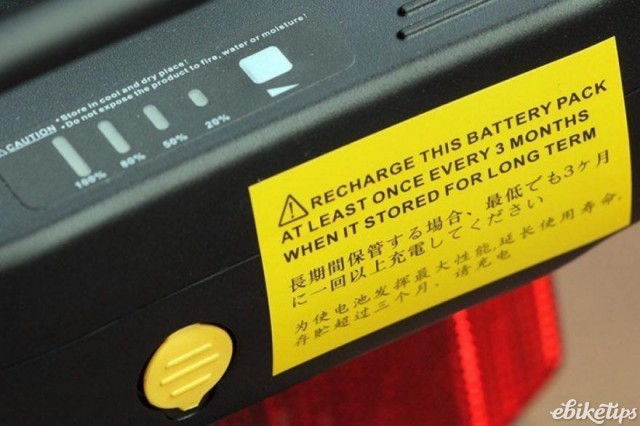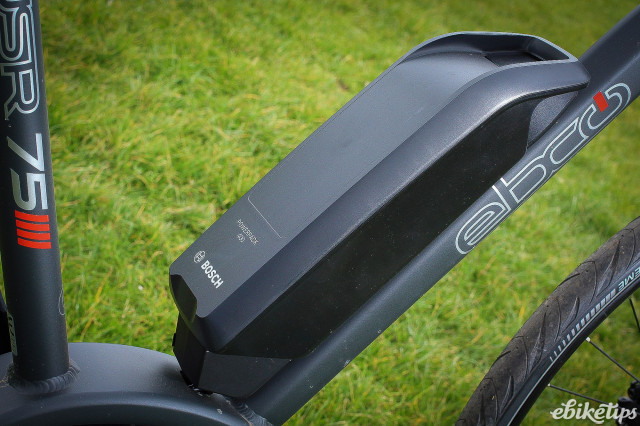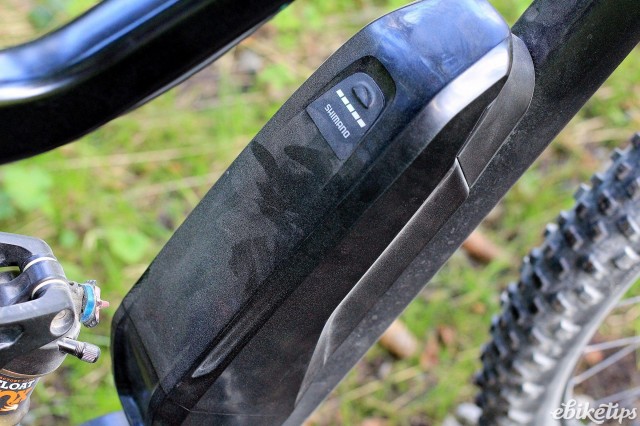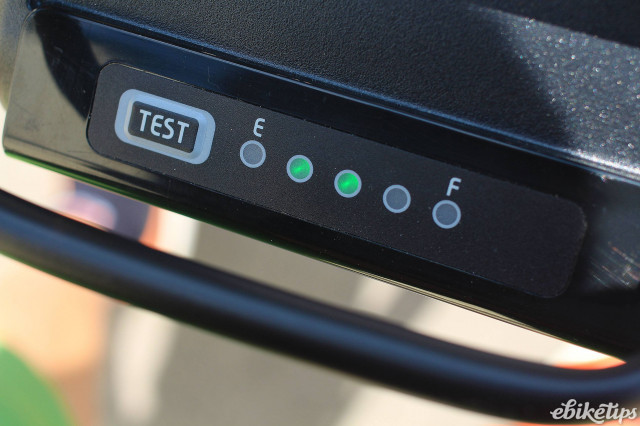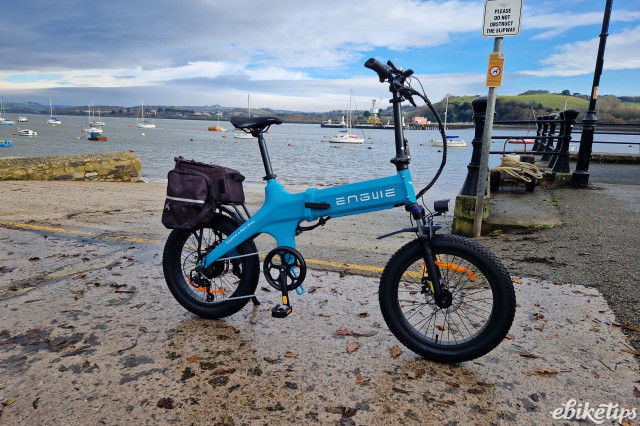It may take a while, but e-bike batteries do deteriorate over time. Here we take a look at the various options if yours is old and worn-out. Is it always realistic to follow the latest industry advice that a defective or end of life battery should be replaced by, “an authorised technically identical battery”?
Batteries are the most expensive 'consumable' on an e-bike, replacement ones typically costing several hundred pounds. A new Bosch 625Wh PowerTube battery will cost around £770, for example.
The good news is that e-bike batteries are generally of far better quality than they were in the early days of the industry. A two-year guarantee is about the minimum industry standard nowadays and a good quality e-bike battery should last many more years than that.
The bad news is that a very well-used e-bike battery will still eventually need replacing.
Option 1: Replace the battery under guarantee
E-bike batteries can fail in two main ways:
- They may fail to charge or provide power to the motor because of faulty connections or a faulty battery management system (BMS) chip or the like.
- They may gradually lose capacity over time and through repeated use, to the point where the range provided is so small it becomes impractical to use them. All lithium-ion batteries degrade with repeated use and recharging. It's not a fault as such, but it does mean that even the best built e-bike batteries have a finite lifespan.
This is an important distinction as different battery guarantees cover different battery faults in different ways. For example, the premium Shimano STEPS system guarantees its own-brand batteries to have a minimum 60% charge capacity after 1,000 charge cycles (STEPS is also used with third party batteries). It's a dealer's job to determine remaining battery capacity with diagnostic software. Bosch's widely quoted guarantee is for a minimum of 60% of full charge capacity for two years or 500 charge cycles (whichever comes first) – though I failed to actually find this on their website.
However, many other firms may simply stipulate a two-year guarantee. This should provide an unequivocal solution if your battery fails totally within a two-year period but leaves the door open to all sorts of semantic wrangling if the usable capacity declines sharply over the same period.
Bearing all the above in mind, it seems best to get your battery guarantee in writing and in as much detail as possible, from the retailer, at the time of purchase. It has to be said that it is quite a difficult task to find explicit and detailed battery guarantees on e-bike companies' websites.
When is a battery degraded enough to qualify for a replacement?
By using a plug in energy meter (for example this one) it is possible to get a very approximate idea of the capacity of your e-bike battery.
Firstly, make sure your e-bike battery is empty by using it on your e-bike until power has run out. You should know its rated capacity in watt-hours (Wh) – see our battery article for more detail on this.
Now recharge it as normal to full but use a plug-in power meter to measure the number of Wh taken from start to finish (ie as soon as the battery is full).
Not all the electricity shown as consumed by the meter will be going into the battery cells. For example, some will be lost by the inefficiencies of the transformer that drops the voltage down from mains 240V to whatever your e-bike battery requires.
All transformers vary but a very approximate working assumption is that 80% of the electricity from the power socket will end up in your battery. So to find out the capacity of your battery just multiply the Wh consumed on the plug-in meter by 0.8 to give you a very rough idea of its health.
It is a good idea to repeat this exercise several times to get an average reading. Clearly this approach has its limits, but it should at least show any very large shortfall in your battery capacity and it will also allow you to monitor it over time. It can be used to help quantify any decline in performance you suspect if you notice diminishing mileage from your battery.
Option 2: Buy a like-for-like replacement
The obvious next step if your battery is out of guarantee is to buy a like-for-like replacement. Even on e-bikes a decade or more old that is often still possible for models with premium brand name motor systems such as Bosch, Shimano, Yamaha and Brose.
Industry advice is to only replace a battery with one that comes from the same manufacturer and is of exactly the same spec. This is for good reason – battery, controller and motor have all been designed to work safely together and using a ‘non-original’ replacement pack potentially introduces uncontrolled risks.
Having said that, you may have the option to upgrade to a larger capacity battery from the same manufacturer. Some Bosch and Shimano batteries of different capacities are explicitly made to be interchangeable.
This is the obvious next step if your battery is out of guarantee: buy a like-for-like replacement. Unfortunately, that isn’t always an option. E-bike technology moves on and older batteries may no longer be produced.
Option 3: Refurbishment
If you are out of guarantee and cannot source a direct replacement, repairing or ‘recelling’ (replacing the battery’s internal cells with new ones) are the next obvious steps. There are undoubtedly risks in recelling, especially if you use a non-expert firm, so clearly the choice of where you go for this is critical.
As we reported back in February, the industry viewpoint, as expressed by CONEBI, is that only original OEM certified batteries should be used as replacements on e-bikes. That's certainly the ideal in terms of getting a quality replacement, but on older e-bikes it's often simply not possible.
Hannes De Jong runs what is probably Europe's leading e-bike recelling and repairing service, Heskon. He sees where CONEBI are coming from, but argues that the industry is likely to move towards refurbishment as it matures.
“There is definitely a safety risk if you use a small, inexperienced firm for recelling or repair, but I think certification provides the answer to many of CONEBI's concerns,” he told us. “Most importantly the new EU laws currently in the pipeline should make it mandatory for a repair/recelling to be the first option.”
Similarly, CONEBI points out that there are currently no explicit rules stipulating that repairing and remanufacturing services cooperate with the original manufacturers or even that they re-certify the battery. This is precisely why De Jong wishes for certification standards to be introduced – so that expert firms like Heskon can provide a reliable and sustainable service with the reinforcement of legal standards too.
With quality mid-drives having been around for more than a couple of decades, there are now a significant number of e-bikes around where the original batteries, with proprietary electronics, are no longer produced. There are of course also many situations where an original supplier and/or manufacturer of an e-bike cannot be traced or has gone out of business. This is where things can get tricky. The good news, as Heskon and some UK specialist firms show, is that there are often options – though care certainly needs to be exercised.
Whether it's a repair on a totally failed battery or, more commonly, a total recelling due to a decline in capacity on a many years old battery, there are companies out there with a long track record in the business and a good reputation. We spoke to two of them to get an insight into what can and can't be done.
Ebike Batteries London
Ebike Batteries say they are able to offer a replacement or repair for “roughly 80%” of batteries that they get asked about. They offer cell revival and cell voltage balancing services; building of new universal batteries and custom batteries (60v+); and generic repairs (changing shorted-out charge ports on batteries for example). On a smaller scale they also offer repairs on e-bikes.
More specifically, they say they should be able to offer a solution for just about “any battery that does not have cynically over-engineered and proprietary electronics” – as the likes of Bosch, Shimano, Yamaha, BMZ etc unfortunately do, according to Ebike Batteries' Cem Rustem.
“Because this is not a governed industry, manufacturers can design their bikes and batteries to work exclusively as a monogamous pairing and not make the electronics in the batteries available as spare parts. So once the battery is out of warranty, if it develops a fault the manufacturer has the customer over a barrel.”
The ages of batteries they are asked to repair varies wildly. “Some less than a year old, others 8+ years old. Most common problems include – BMS problems, cell voltage imbalance (battery never charges to full capacity, never discharges to cut-off voltage) and dead cells (where the customer has left the battery to self discharge for an extended period of time).”
They charge a £50, non-refundable diagnosis fee, which is put towards a final repair price (typically around £100-£150 for cell balancing). Their most common re-cell is 36v 13Ah+ using Panasonic NCR18650BL cells for £375 (price includes VAT, 1-year warranty on cells and collection and return via courier).
Re-cells carry a 1-year warranty on cells, although this is voided if the cells have been left to self discharge. No guarantee is offered for cell revival/cell voltage balancing as there is no way to scientifically predict or second guess whether or not the repair will be a lasting one.
Heskon Accu, Netherlands
Dutch-based Heskon Accu are one of the leading e-bike battery recellers and repairers in Europe – and very possibly the biggest (Heskon Accu deals with other businesses, whilst the consumer arm of the company is Fietsaccu-Revisie).
Unfortunately, they don't offer any services in the UK, but de Jong certainly gives an interesting picture of the growing scale and potential of the battery repair and recelling industry in continental Europe where e-bike sales absolutely dwarf those in the UK.
De Jong says the company has the ability to work with 250 different battery brands and they have over 1,000 individual battery models on their stock list. The company has 50 employees and recelling is their most common service (as opposed to offering off the shelf batteries, although a range of these are also available).
De Jong says: “Whilst we can repair and/or recell most e-bike batteries we come across, we are limited in part by BMS availability and the software to program the BMS with – not all manufacturers will cooperate with us on this though quite a number will.”
The vast majority of e-bike batteries use similar or the same cells (the so-called 18650 size), but with the individual cells put together in a big range of configurations and using a wide range of different different management systems. Heskon try to rebuild as near to the original as possible in terms of the configuration of cells, to give the same voltage and ability to have current drawn from it. If possible they will keep the original casing, BMS and connectors.
Recycling
Despite the efforts of the likes of Specialized, e-bike battery recycling in the UK is in its infancy, especially compared to the situation in continental Europe.
While it's good to see recycling increasingly being offered, in sustainability terms it's very much a last ditch solution. Even if your battery is beyond economic repair or simply not repairable, recycling only provides a route for getting some of the raw materials back and doesn't of course provide a new battery that's compatible with an old e-bike.
De Jong thinks a combination of recelling and recycling is the most sustainable approach and the most helpful to the consumer.
“Recycling the whole battery is not the perfect option as either the 'melting' form or the 'shredding' form of recycling currently only recover 50% or 60-70% respectively of the battery's raw materials. Our recelling is much greener as just recycling the old cells leads to a much higher percentage of materials being reclaimed through recycling and is an easier, less energy intensive process than recycling whole batteries.”
De Jong also says that recently produced high-end batteries are being made too complex and can often be extremely difficult or even impossible to repair – for example, by the addition of GPS connectivity and app functionality into the battery circuitry itself.
Conclusion
While e-bike battery refurbishment is an industry hot potato and not without its risks, it has great sustainable potential and should be organised and certified to provide a cost-effective and safe option for older e-bikes in particular, where replacement batteries from the original manufacturers are not available.
We were recently contacted by a reader with exactly this problem and they are now back on the road after Ebike Batteries London recelled the battery in question. The alternative – implicit in the original manufacturer's advice to the customer – was that the bike could no longer be used as an e-bike. This would effectively have meant scrapping what was an otherwise perfectly good e-bike.
As a final note on battery safety, it’s worth emphasising there are other equally important measures to take, even with good quality batteries.
Unsupervised charging (especially overnight) should be avoided. Similarly, you should always, if possible, use a charger that came from the original manufacturer. The one that comes with your battery should sync up well and not overload the battery. Using a different charger risks a malfunction during charging.
Using a replacement battery that does not come from the original manufacturer (whether a dealer is involved or not) may also void the warranty of your electric bike or kit. Check with the e-bike or kit company to understand what their policy is regarding the use of aftermarket replacement batteries. It may not matter too much if it allows you to keep using an old e-bike that would otherwise be scrapped, but as you can see above, it may be that you have other options before going down this route.
